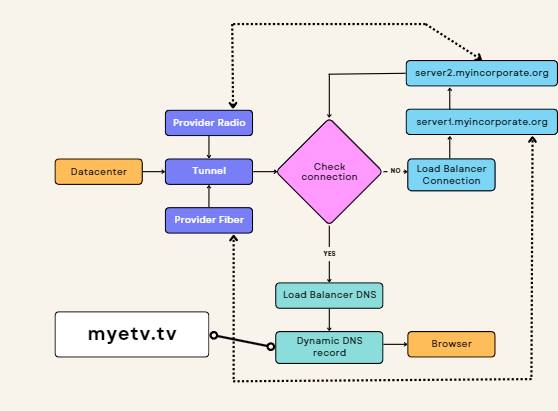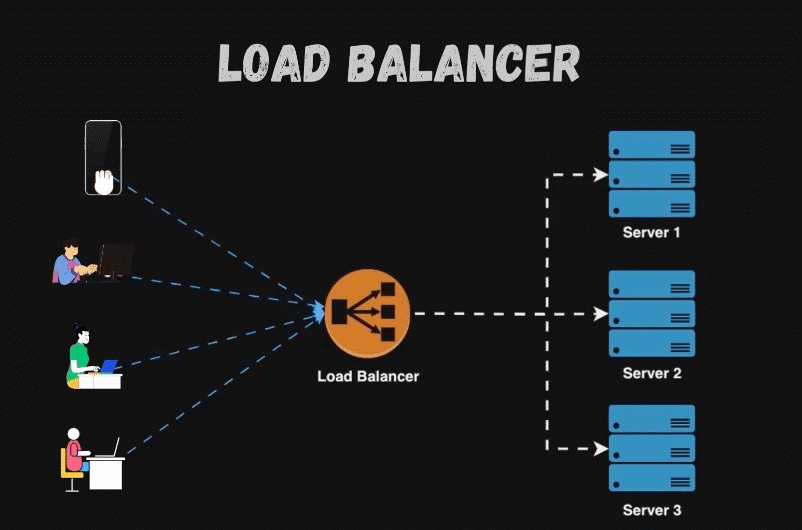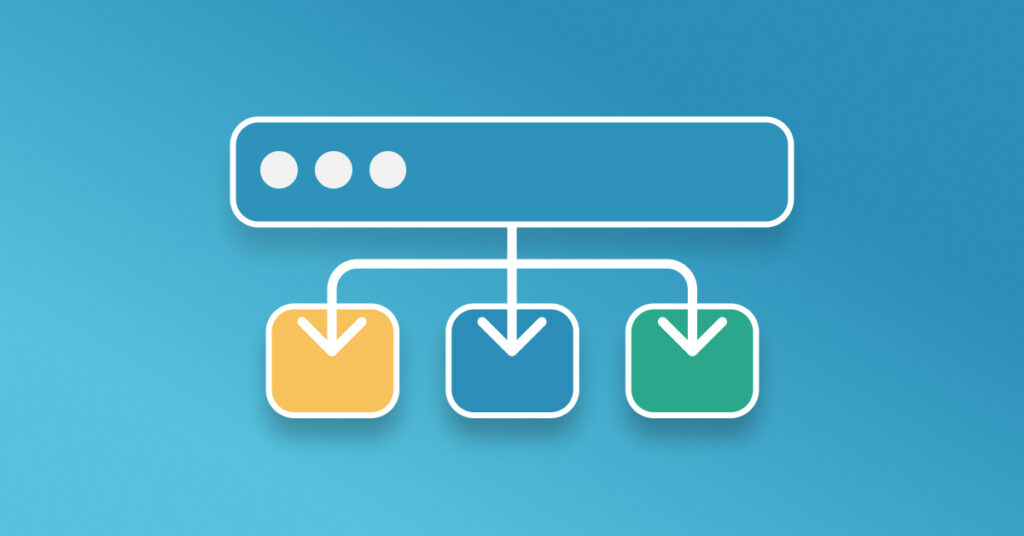Having more available and redundant connections is the desire of any data center, today with the current situation of the world a stable connection that can be used even in very difficult situations is increasingly required. For this, radio bridges help us and even better, low-orbit satellite connections can be a stable alternative to wired terrestrial networks. However, what we need, to have a functional data center, is also a particular knowledge of how networks work; human knowledge is therefore essential to do an excellent job and to customize connections to your technical needs. On MYETV thanks to a small Cloudflare software- [Program/Software: the instructions that control what a computer does; computer programs] - installed on the servers that takes care of balancing the connection between multiple access- [Access the simple access to a website as a visitor] - points and multiple server hosts, it is possible to have multiple connection providers that converge in a single point called “tunnel”; furthermore, our custom script takes care of checking every minute, via the DNS API, if the DNS records connected to the respective access points are offline, thus balancing the connection; if one of the two access points is offline, it changes the DNS records pointing to the online one. I have prepared a small graph to better explain how the connection works:

This graph shown the server in the datacenter opens a tunnel including the two connections (fiber and radio) and dividing them into two different hosts; the script in the middle checks if the hosts are online or offline and balances the final load by dynamically changing the DNS records of the domains. Of course we can add as many connections as we want, simply with different hostnames “server1.myincorporate.org” or “server2.myincorporate.org” or more. This guarantees us a stable connection without service interruptions even when one of the two connections, or one of the two providers, is offline. We used a custom software load balancer because we don’t have any higher level needs, but it’s also possible to use a hardware load balancer to get more performance.

With cloudflared, the same Cloudflare software used to create a tunnel, you can connect the radio tunnel to a public host (even behind a carrier grade nat) for example “server2.myincorporate.org” while on the other public host you can set a static ip of your wired line for example “server1.myincorporate.org”; a custom script will check if the host assigned to the wired line is online and will change the DNS records via API with an online host behind a radio tunnel (or satellite). It is also possible to use a dynamic ip for the wired connection, for this I also help created a public script that checks your current ip and changes the ip of a DNS “record A” via the APIs available at the DNS infrastructure level; others records should be set as “CNAME” to the one “record A” setup above. This is extremely useful when you have a host that doesn’t necessarily need to be behind a proxy tunnel or doesn’t need caching, like a streaming host. The load balancing script that checks the two custom hosts it’s a bit more complicated and has not been made public yet.
Even though these topics require a high level of technical knowledge, I hope I have been clear enough. With the knowledge of how networks work, how to create software and artificial neural networks, we can truly revolutionize the hosting of computing platforms and reduce datacenter costs by having multiple redundant providers in a single access point. Most importantly, disruptions to services will be kept to a minimum.


